
Classic cars possess an undeniable allure, a captivating blend of mechanical artistry, cultural significance, and the raw, unadulterated passion for the open road. These machines are far more than mere relics; they are living testaments to engineering prowess and design innovation that continue to deeply resonate with enthusiasts. In an era increasingly defined by digital interfaces and electric powertrains, there’s a distinct longing for the tactile, visceral driving experience only a true classic can provide.
The 1960s and 1970s, in particular, represent a golden age for automotive design and performance. It was a period of unbridled creativity, resulting in a spectacular array of vehicles. From elegant luxury cruisers to raw, pavement-pounding muscle cars and nimble sports cars, these vehicles didn’t just transport people—they defined a generation, becoming symbols of freedom and aspirational living.
For many, the dream isn’t solely to own these magnificent machines in pristine condition, but to experience them anew. Reimagined with modern technology, safety, and efficiency, yet retaining every ounce of their original character and spirit, such a revival is highly anticipated. This article pays homage to 15 such legends from this iconic period. We will explore the first seven of these cherished models, delving into their history, design, performance, and the compelling reasons why they absolutely deserve a triumphant return to modern showrooms.
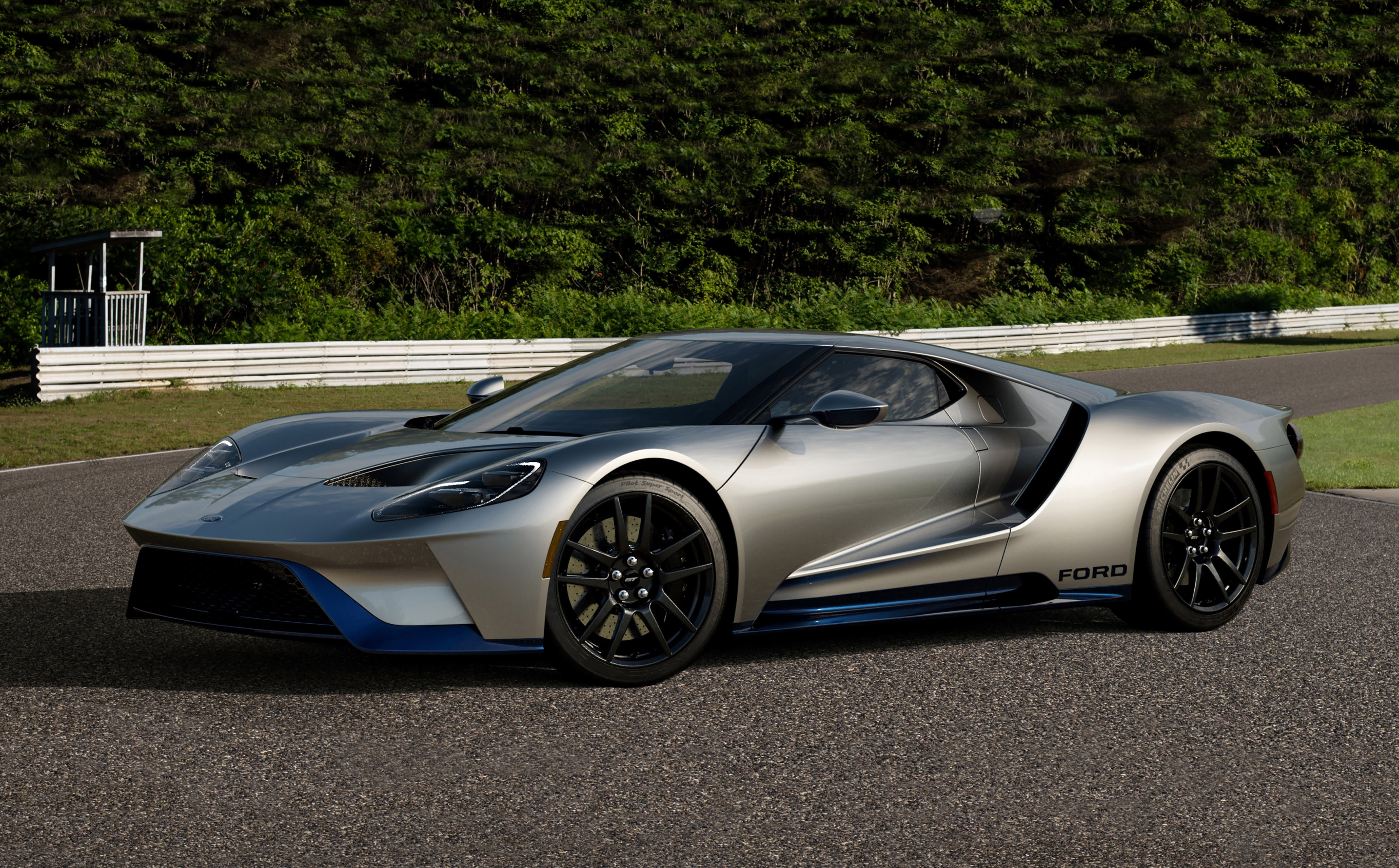
1. **Ford Thunderbird (1955-1966)**Ford introduced the Thunderbird in 1955 as a direct competitor to the Chevrolet Corvette, quickly establishing its own distinct identity. The original T-Bird was envisioned as a personal luxury vehicle, offering a sophisticated blend of performance and opulence that appealed to affluent buyers. Its initial two-seat configuration underscored its status as a stylish, individualistic statement, a vehicle for discerning tastes.
The Thunderbird evolved significantly, transitioning from a nimble two-seater to a four-seat convertible. This adaptability broadened its appeal, allowing it to cater to those seeking greater passenger capacity without sacrificing style or power. Its sleek, stylish look, paired with a powerful V8 engine, solidified its reputation, making it an instant favorite among collectors who appreciated both its aesthetics and its capabilities.
The T-Bird became synonymous with a smooth ride and elegant design, securing its place in automotive history. Its reputation for class and performance endured through various stylistic changes. A modern Thunderbird revival promises to combine its retro flair and clean cruising lines with contemporary performance, creating a dream car that honors its heritage while embracing the future of motoring.
Car Model Information: 2003 Ford Thunderbird
Name: Ford Thunderbird
Caption: 1957 Thunderbird
Manufacturer: Ford Motor Company
Production: unbulleted list
ModelYears: unbulleted list
Class: unbulleted list
Layout: Front-engine, rear-wheel drive layout
Categories: 1960s cars, 1970s cars, 1980s cars, 1990s cars, 2000s cars
Summary: The Ford Thunderbird is a personal luxury car manufactured and marketed by Ford Motor Company for model years 1955 to 2005, with a hiatus from 1998 to 2001.
Ultimately gaining a broadly used colloquial nickname, the T-Bird, the model was introduced as a two-seat convertible, subsequently offered variously in a host of body styles including as a four-seat hardtop coupe, four-seat convertible, five-seat convertible and hardtop, four-door pillared hardtop sedan, six-passenger hardtop coupe, and five-passenger pillared coupe, before returning in its final generation, again as a two-seat convertible.
At its inception, Ford targeted the two-seat Thunderbird as an upscale model. The 1958 model year design introduced a rear seat and arguably marked the expansion of a market segment that came to be known as personal luxury cars, positioned to emphasize comfort and convenience over handling and high-speed performance.
Get more information about: Ford Thunderbird
Buying a high-performing used car >>>
Brand: Ford Model: Thunderbird
Price: $14,500 Mileage: 49,430 mi.

2. **Pontiac Firebird (1967-2002)**The Pontiac Firebird launched in 1967, immediately entering the fierce American muscle car wars. Designed to rival the Chevrolet Camaro and Ford Mustang, it did so with undeniable flair and aggressive styling. Its powerful V8 engines made it a favorite among enthusiasts throughout the 1960s and 1970s, a testament to its potent combination of looks and raw power.
The Firebird’s distinct appearance, featuring a prominent front grille and sharp lines, perfectly captured the spirit of the muscle car era. This visual identity was matched by exceptional performance, delivering thrilling speed and precise handling that resonated deeply with a generation of drivers seeking exhilaration and connection to their machines.
The Trans Am, in particular, became synonymous with high performance and iconic cool, further cemented by its appearance in “Smokey and the Bandit.” Despite its discontinuation in 2002, the Firebird’s legacy thrives. Many enthusiasts yearn for a modern version that seamlessly blends its formidable muscle car heritage with cutting-edge performance, offering a potent mix of nostalgia and contemporary driving excitement.
Car Model Information: 1983 Pontiac Firebird Trans Am 2D Coupe
Name: Pontiac Firebird
Caption: The second, third, and fourth generations of,the Pontiac Firebird Trans Am
Manufacturer: Pontiac (automobile)
Production: February 23, 1967 – August 30, 2002
ModelYears: 1967 – 2002
Class: Pony car,Muscle car
Platform: GM F platform
Related: Chevrolet Camaro
Layout: Front engine, rear-wheel-drive layout
Categories: 1970s cars, 1980s cars, 1990s cars, 2000s cars, All articles with dead external links
Summary: The Pontiac Firebird is an American automobile built and produced by Pontiac from the 1967 to 2002 model years. Designed as a pony car to compete with the Ford Mustang, it was introduced on February 23, 1967, five months after GM’s Chevrolet division’s platform-sharing Camaro. This also coincided with the release of the 1967 Mercury Cougar, Ford’s upscale, platform-sharing version of the Mustang.
The name “Firebird” was also previously used by GM for the General Motors Firebird series of concept cars in the 1950s.
Get more information about: Pontiac Firebird
Buying a high-performing used car >>>
Brand: Pontiac Model: Firebird
Price: $22,991 Mileage: 38,257 mi.
Read more about: The 18 Beloved Cars We Wish They Would Bring Back
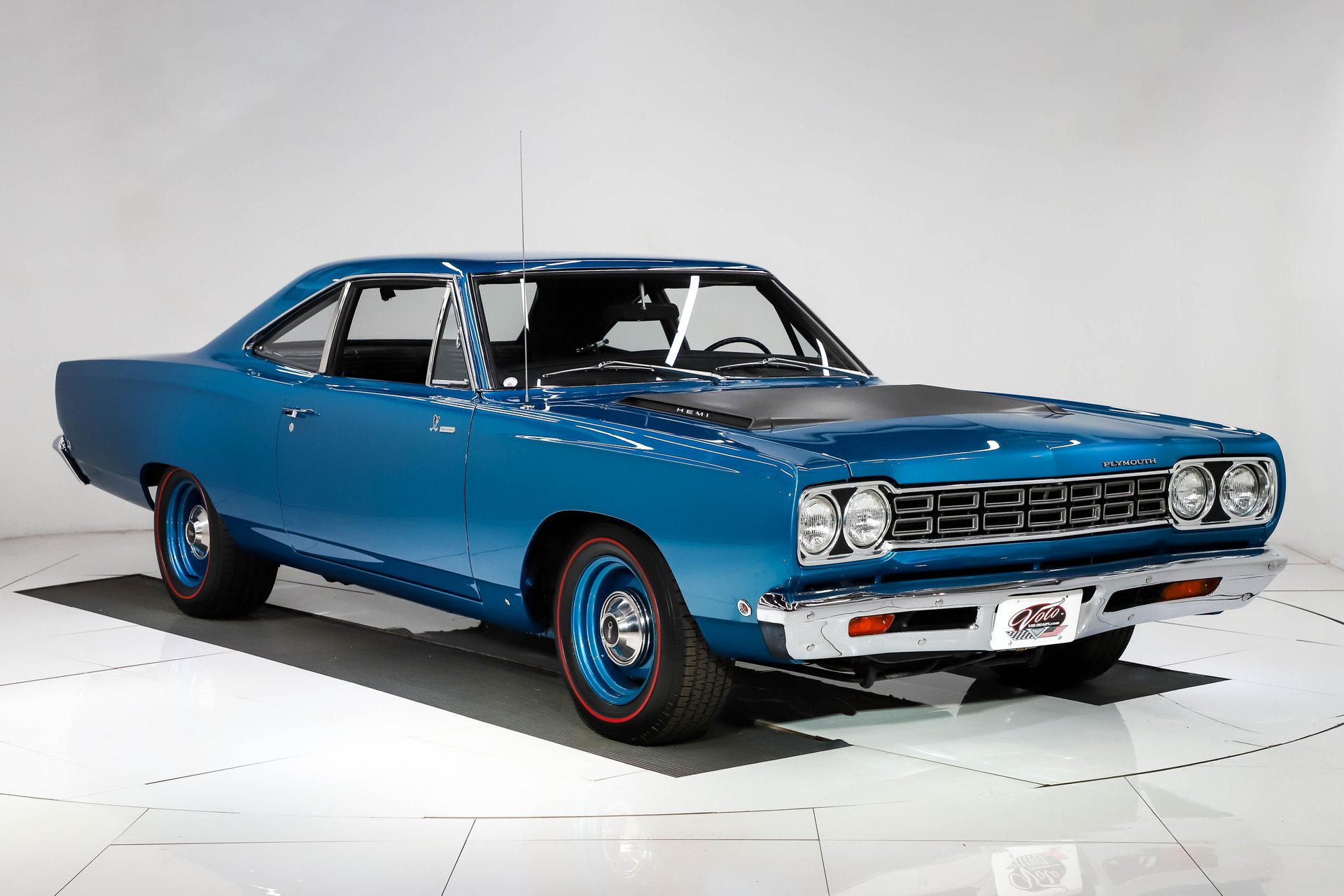
3. **Plymouth Barracuda (1964-1974)**The Plymouth Barracuda holds a significant place as a pioneer in the pony car segment, remarkably predating the Ford Mustang. Its 1964 debut offered a truly unique option for performance car lovers, challenging conventional design with its bold innovations. The Barracuda was instantly recognizable for its groundbreaking fastback roofline, a radical stylistic choice that made a strong visual statement.
Beyond its striking looks, the Barracuda was known for aggressive styling and a formidable array of powerful engine options, including the desirable V8. The first-generation model was revolutionary, effectively shaping the benchmarks for the muscle car era. Its daring design and excellent handling ensured it stood out in the crowded market of the 1960s, quickly attracting a loyal following.
As years passed, the Barracuda evolved, becoming an even more potent symbol of speed and performance. Later models, particularly the ‘Cuda variants, ascended to legendary status, embodying the raw power of Mopar’s explosive golden era. Though production ceased in 1974, its iconic status has only grown. A modern revival could tap into this rich history, attracting new enthusiasts eager for a performance car with a profound connection to its illustrious past.
Car Model Information: 1971 Plymouth Barracuda
Caption: 1970 Hardtop Coupe
Name: Plymouth Barracuda
Manufacturer: Plymouth (automobile)
Production: 1964–1974
Assembly: Fenton, Missouri,Hamtramck, Michigan,Maywood, California,Windsor, Ontario
Layout: Front-engine, rear-wheel drive layout
Class: Pony car
Categories: 1970s cars, All articles with dead external links, All articles with unsourced statements, Articles with dead external links from February 2018, Articles with dead external links from January 2022
Summary: The Plymouth Barracuda is a two-door pony car that was manufactured by Chrysler Corporation from 1964 through 1974 model years.
The first-generation Barracuda was based on the Chrysler A-body and was offered from 1964 until 1966. A two-door hardtop (no B-pillar) fastback design, it shared a great majority of parts and bodywork with the Plymouth Valiant, except for the distinctive wraparound rear glass.
The second-generation Barracuda, though still Valiant-based, was heavily redesigned. Built from 1967 through 1969, it was available as a two-door in fastback, notchback, and convertible versions.
The third generation, offered from 1970 until 1974, was based on the Chrysler E-body, exclusive to it, and the slightly larger Dodge Challenger. A completely new design, the two-door Barracuda was available in hardtop and convertible body styles.
Get more information about: Plymouth Barracuda
Buying a high-performing used car >>>
Brand: Plymouth Model: Barracuda
Price: $54,999 Mileage: 12,468 mi.
Read more about: 11 Iconic Classics: Your Ultimate Guide to Restoring Affordable Dreams Instead of Buying Them
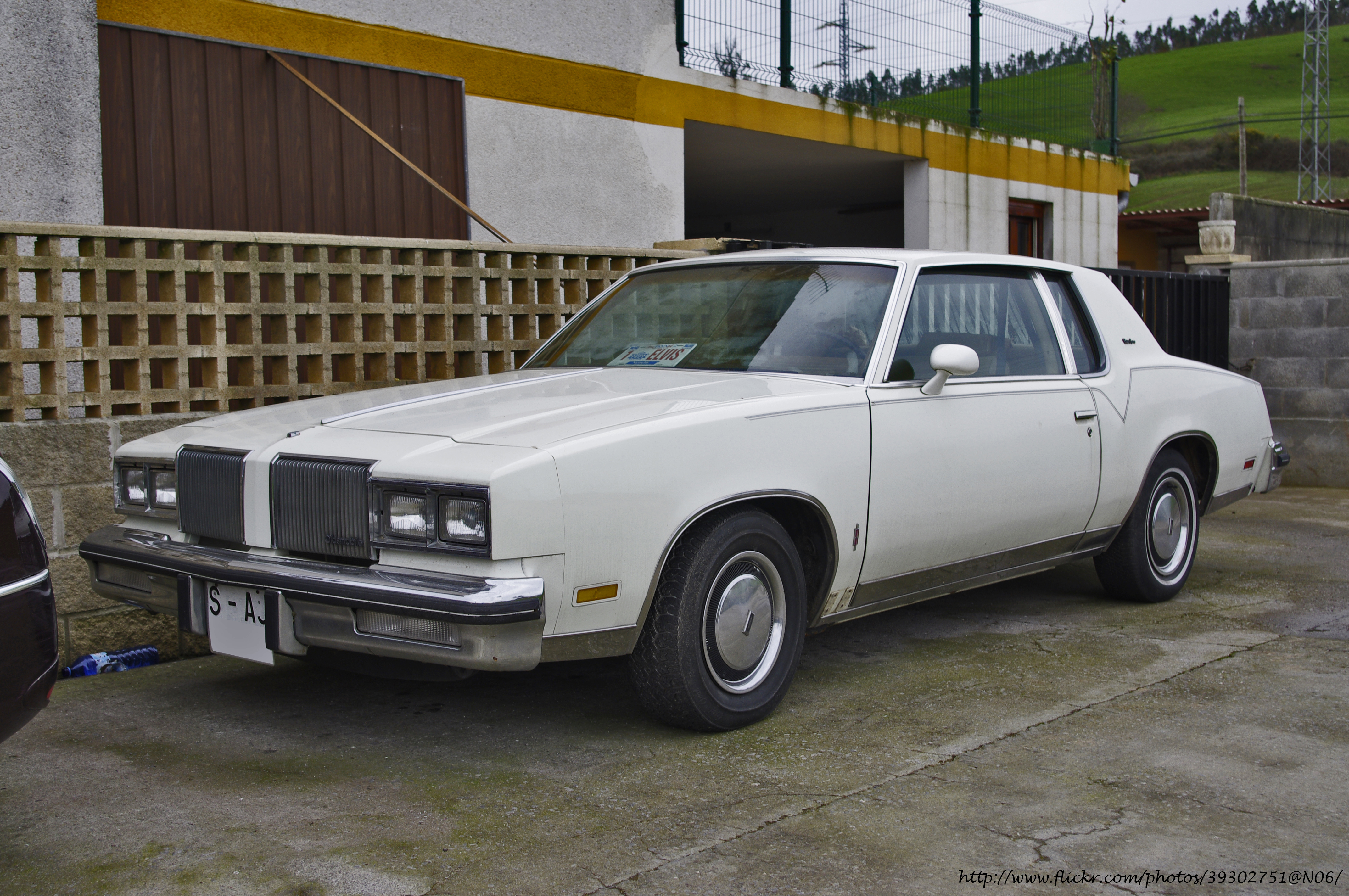
4. **Oldsmobile Cutlass Supreme (1960s-1980s)**The Oldsmobile Cutlass Supreme was a phenomenon, reigning as one of the most popular cars in the U.S. during the 1960s and 1970s. Its widespread appeal stemmed from its ability to bridge segments, expertly combining the plush comfort and sophisticated luxury of a full-sized car with the robust performance of a muscle car. This unique versatility made it a favorite for an exceptionally wide range of buyers.
The Cutlass Supreme captivated buyers with its impeccably smooth lines, exuding understated elegance, and a luxuriously appointed interior. Under the hood, powerful V8 engines delivered a refined yet authoritative driving experience that few competitors matched. Throughout its extensive production, the Cutlass maintained its identity as a symbol of American automotive excellence, despite various design updates.
The Supreme’s versatility was key; it served effortlessly as a family car, a thrilling performance machine, and a comfortable luxury cruiser, all in one package. Despite its discontinuation in the late 1980s, the Cutlass remains a cherished classic. Enthusiasts envision a modern revival offering the perfect contemporary blend of comfort, luxury, and performance, marrying its timeless appeal with today’s discerning car buyers’ expectations.
Car Model Information: 2022 Honda Civic Sport
Name: Oldsmobile Cutlass Supreme
Manufacturer: Oldsmobile
Production: 1965–1997
Layout: FR layout
Successor: Oldsmobile Intrigue
Class: Personal luxury car
Caption: 1970 Oldsmobile Cutlass Supreme
Categories: 1960s cars, 1970s cars, 1980s cars, 1990s cars, All Wikipedia articles written in American English
Summary: The Oldsmobile Cutlass Supreme is a mid-size car produced by Oldsmobile between 1966 and 1997. It was positioned as a premium offering at the top of the Cutlass range. It began as a trim package, developed its own roofline, and rose during the mid-1970s to become not only the most popular Oldsmobile but the highest selling model in its class.
It was produced as a rear-wheel drive two-door hardtop, sedan, and station wagon into the 1980s, and a convertible through 1972. In 1988 Oldsmobile sought to capitalize on the brand equity of the Cutlass Supreme marque by replacing it with a downsized front-wheel drive model based on the General Motors W platform.
When production ended there was no direct replacement for the Cutlass Supreme, although the Intrigue introduced for 1998 was designed in size and price to replace all the Cutlass models.
Get more information about: Oldsmobile Cutlass Supreme
Buying a high-performing used car >>>
Brand: Oldsmobile Model: Cutlass Supreme
Price: $25,849 Mileage: 16,061 mi.
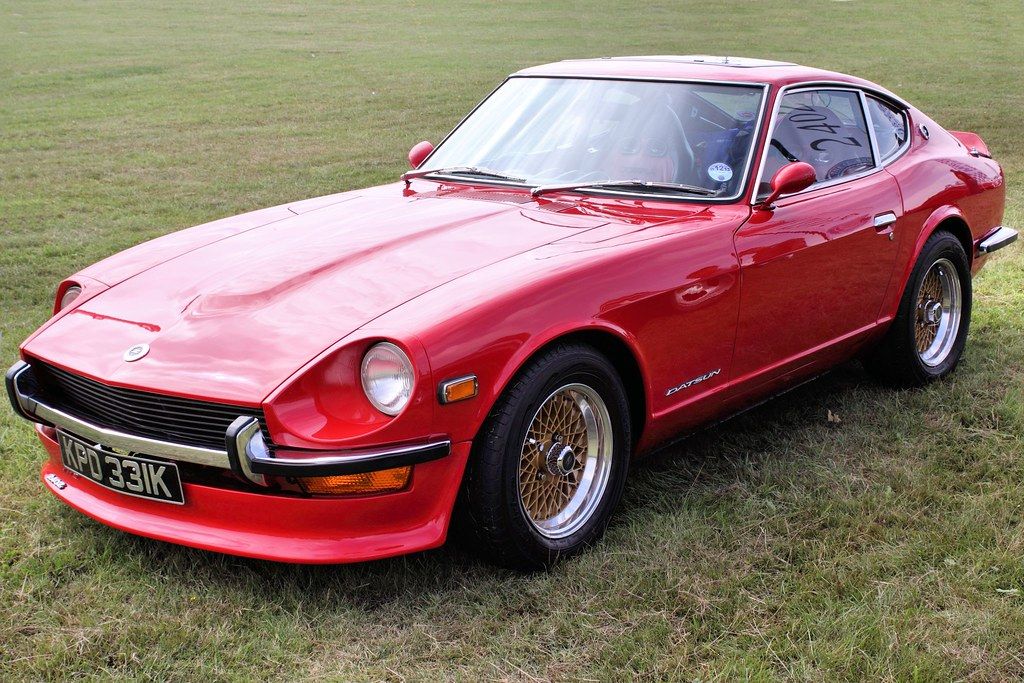
5. **Datsun 240Z (1969-1978)**The Datsun 240Z emerged as Japan’s compelling answer to dominant British and American sports cars, marking a pivotal moment for Japanese automakers. What made the 240Z truly special was its masterful fusion of sleek, European-inspired style, exhilarating performance, and unprecedented affordability. Its distinctive low-slung design, characterized by elegant lines, immediately set it apart, asserting its presence with quiet confidence.
Beneath its attractive exterior, the 240Z housed a potent six-cylinder engine, providing ample power for spirited driving on any road. The car’s handling garnered widespread praise for its precision and responsiveness, quickly cementing its status among driving enthusiasts. Crucially, the 240Z was significantly more affordable than many European sports cars, a factor vital in cultivating its massive, dedicated following. It democratized performance.
The Datsun 240Z was instrumental in establishing Japanese automakers as serious contenders in the U.S. sports car market, laying groundwork for the “Z” legacy. After production concluded in 1978, it rapidly ascended to classic status, revered for its robust performance, timeless elegance, and bulletproof engineering. A modern iteration could reignite the pure thrill of driving for a new generation, captivating those who value a meticulously crafted, nimble sports car that prioritizes driver engagement.
Car Model Information: 1972 Datsun 240Z
Name: Nissan Fairlady Z (Datsun 240Z, 260Z, and 280Z)
Aka: unbulleted list
Manufacturer: Nissan
Production: 1969–1978
Class: Sports car
Layout: Front-engine, rear-wheel-drive layout
Assembly: Hiratsuka, Kanagawa
BodyStyle: unbulleted list
Designer: Yoshihiko Matsuo
Predecessor: Datsun Sports
Successor: Nissan Fairlady Z (S130)
Caption: 1970–1973 Nissan Fairlady Z
Categories: 1970s cars, All Wikipedia articles written in American English, All articles with unsourced statements, Articles with short description, Articles with unsourced statements from February 2021
Summary: The Nissan S30, sold in Japan as the Nissan Fairlady Z but badged as the Datsun 240Z, 260Z, and 280Z for export, are 2-seat sports cars and 2+2 GT cars produced by Nissan from 1969 until 1978. The S30 was conceived of by Yutaka Katayama, the President of Nissan Motor Corporation U.S.A., and designed by a team led by Yoshihiko Matsuo, the head of Nissan’s Sports Car Styling Studio. It is the first car in Nissan’s Z series of sports cars.
The S30 had four-wheel independent suspension and a powerful straight-six engine with an overhead camshaft, features identified with far more expensive premium European sports cars and coupés such as the Jaguar E-Type and BMW 2800 CS, but absent from similarly priced sports cars such as the Alfa Romeo Spider, MGB and Opel GT, which had smaller four-cylinder engines and rear live axles. The S30’s styling, engineering, relatively low price, and impressive performance resonated with the public, received a positive response from both buyers and the motoring press, and immediately generated long waiting lists.
As a halo car, the S30 broadened the acceptance of Japanese carmakers beyond their image as producers of practical and reliable but prosaic and unfashionable economy cars. Datsun’s growing dealer network—compared to limited production imported sports cars manufactured by Jaguar, BMW, Porsche, Alfa Romeo, and Fiat—ensured both easy purchase and ready maintenance.
The S30 was initially sold alongside the smaller four-cylinder Datsun Sports, which was dropped from production in 1970. The S30 240Z is unrelated to the later 240SX, sold as the Silvia in Japan.
Get more information about: Nissan Fairlady Z (S30)
Buying a high-performing used car >>>
Brand: Datsun Model: 240Z
Price: $32,995 Mileage: 122,000 mi.
Read more about: The Generational Car Gap: 19 Boomer Favorites Millennials Overlook

6. **Chevrolet El Camino (1959-1987)**The Chevrolet El Camino represented a bold and truly unique automotive concept, masterfully blending the robust utility of a pickup truck with the inherent comfort and driving dynamics of a passenger car. This imaginative design resulted in a vehicle that was both stylish and eminently practical, quickly finding favor among enthusiasts who desired a versatile machine capable of handling work tasks while presenting a sleek appearance on the road. It was an odd design choice, but one that undeniably caught on.
The ingenious combination of generous cargo space and car-like handling made the El Camino an exceptionally compelling choice for diverse applications, equally adept at personal errands and demanding business use. Its versatility was further underscored by a wide array of engine configurations throughout its extensive production, from economical six-cylinder models to powerful V8s. The SS model, particularly with its 454 V8, has long been a fan favorite.
Despite a strong and loyal following, the El Camino was discontinued in 1987, partly due to the rising popularity of compact pickups. Nevertheless, its distinctive look and unparalleled versatility cement its status as a cherished classic. Many yearn for a modern version that preserves the best of both worlds—truck utility and car comfort. A triumphant return could perfectly cater to contemporary buyers seeking unmatched practicality seamlessly integrated with undeniable style.
Car Model Information: 2022 Honda Civic Sport
Name: Chevrolet El Camino
Caption: 1969 El Camino SS
Manufacturer: Chevrolet
ModelYears: 1959–1960 ,1964–1987
Layout: Front-engine, rear-wheel-drive layout,rear-wheel drive
Class: Coupé utility,Muscle car
Categories: 1960s cars, 1970s cars, 1980s cars, All articles lacking reliable references, All articles needing additional references
Summary: The Chevrolet El Camino is a coupé utility vehicle that was produced by Chevrolet between 1959–1960 and 1964–1987. Unlike a standard pickup truck, the El Camino was adapted from the standard two-door Chevrolet station wagon platform and integrated the cab and cargo bed into the body.
Introduced in the 1959 model year in response to the success of the Ford Ranchero coupé utility, its first run, based on the Biscayne’s B-body, lasted only two years. Production resumed for the 1964–1977 model years based on the Chevelle platform, and continued for the 1978–1987 model years based on the GM G-body platform.
Although based on corresponding General Motors car lines, the vehicle is classified in the United States as a pickup. GMC’s badge engineered El Camino variant, the Sprint, was introduced for the 1971 model year. Renamed Caballero in 1978, it was also produced through the 1987 model year.
Get more information about: Chevrolet El Camino
Buying a high-performing used car >>>
Brand: Chevrolet Model: El Camino
Price: $25,849 Mileage: 16,061 mi.
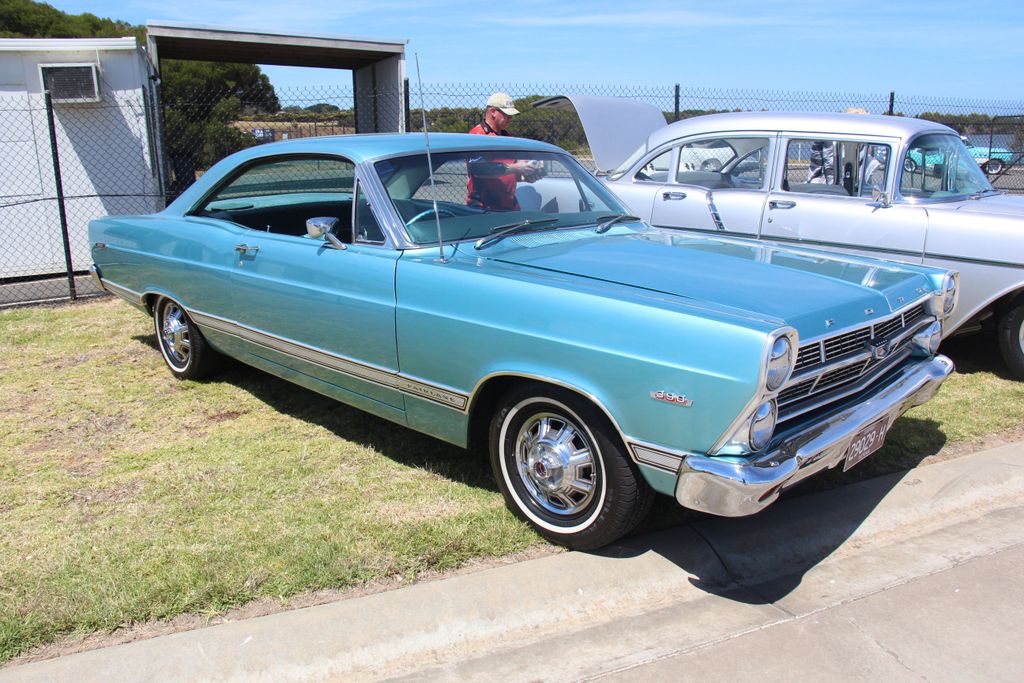
7. **Ford Fairlane (1955-1970)**The Ford Fairlane was a quintessential full-sized American car, demonstrating remarkable adaptability to a diverse spectrum of buyers. Its extensive lineup ranged from practical, family-friendly sedans to strikingly sporty convertibles and hardtops. With its impeccably smooth lines and comfortable, well-appointed interior, the Fairlane established itself as an excellent choice for families prioritizing both practicality and a distinctly stylish aesthetic.
Beyond its role as a reliable family vehicle, the Fairlane also emerged as a potent competitor in the burgeoning muscle car market. This was particularly evident with the introduction of its performance-oriented GT and 500 models, which elevated its status. These variants were engineered with powerful V8 engines, delivering exhilarating acceleration and sporty handling that appealed directly to enthusiasts. The Fairlane represented a harmonious blend of mainstream appeal and high-octane excitement.
Over its production, the Fairlane became an iconic symbol of 1960s American motoring, embodying a unique combination of accessible luxury and thrilling performance. Although its production concluded in 1970, the Ford Fairlane endures as a beloved classic, remembered for its versatility and contributions to both family car and muscle car segments. A modern interpretation could brilliantly tap into nostalgia, while integrating the latest technology, delivering a balanced and compelling driving experience that honors its heritage.
Continuing our exploration of the golden age of motoring, we now turn our attention to eight more legendary vehicles that left an unforgettable mark on the asphalt and in the hearts of enthusiasts. These machines, from the quirky and innovative to the outright luxurious, represent a diverse tapestry of automotive history, each carrying a distinct legacy that makes its potential return a deeply compelling prospect.
Car Model Information: 1956 Ford Fairlane Sedan
Name: Ford Fairlane
Aka: Ford LTD
Manufacturer: Ford Australia
Production: 1959–2007
Assembly: Broadmeadows Assembly Plant,Eagle Farm
Class: Full-size luxury car
BodyStyle: sedan (car)
Related: Ford Falcon (Australia)
Categories: 1960s cars, 1970s cars, 1980s cars, 1990s cars, 2000s cars
Summary: The Ford Fairlane and LTD are full-sized luxury vehicles produced in a series of models by Ford Australia between 1959 (with the LTD commencing production in 1973) and 2007.
From 1959 to 1964, the Fairlane was a locally assembled version of the American Ford Fairlane, which had taken its name from Henry Ford’s estate, Fair Lane, near Dearborn, Michigan. The car was Ford Australia’s top-of-the-range model until replaced by an Australian-assembled version of the full-sized American Ford Galaxie. In 1967, Ford Australia reintroduced the Fairlane, this time as an Australian-developed, luxury, long-wheelbase version of its mainstream Falcon/Fairmont, positioned between the Falcon and the Galaxie. The locally assembled Galaxie evolved into the LTD which was itself replaced in 1973 by an Australian-developed, Fairlane-based model, also known as the Ford LTD. Unlike its designation in Australia, in North America the LTD was not considered a luxury vehicle. In Australia, “LTD” originally stood for “Lincoln Type Design”, although Ford Australia later promoted a connection with the meaning “Limited”.
The Fairlane and LTD competed in the marketplace with the Holden Brougham (1968–1971), the Statesman (1971–1984), and later with the Holden Statesman and Caprice (1990–2007).
Ford produced the Fairlane/LTD at the Broadmeadows Assembly Plant and Eagle Farm, Queensland, in the early years. Until around March/April 1978 with the upcoming release of the XD Falcon and its derivatives, Ford consolidated Falcon production at Campbellfield and Fairlane/LTD manufacturing to Eagle Farm. Around the release of the next generation during the EA Falcon era (1988), Eagle Farm ceased manufacture of cars and only produced heavy trucks until its closure in 1998.
Get more information about: Ford Fairlane (Australia)
Buying a high-performing used car >>>
Brand: Ford Model: Fairlane
Price: $19,991 Mileage: 88,500 mi.
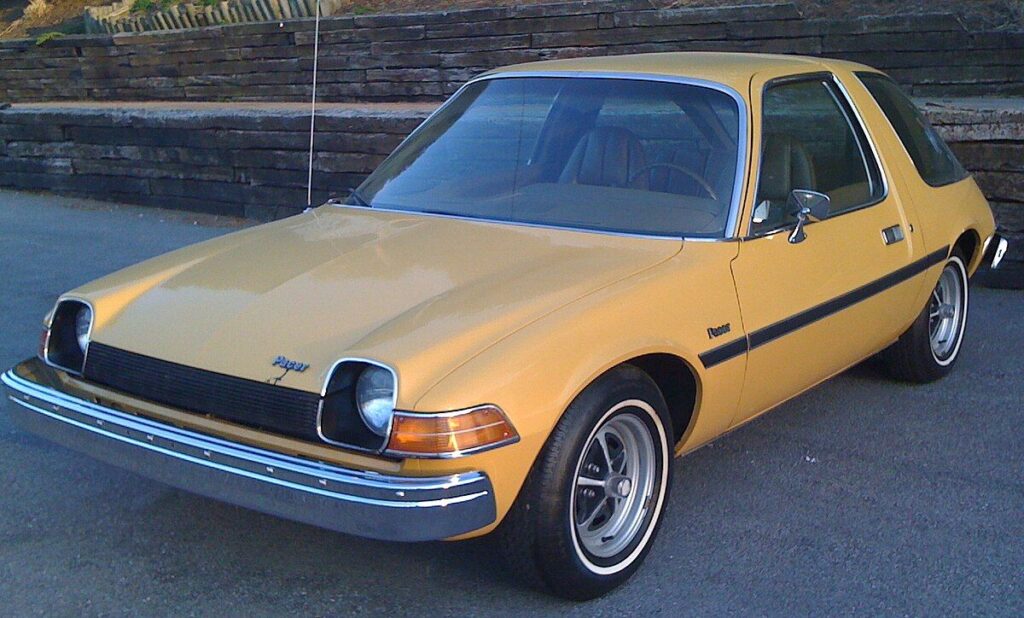
8. **AMC Pacer (1975-1980)**The AMC Pacer stands out as one of the most distinctive and conversation-starting cars of the 1970s, instantly recognizable for its extraordinarily wide stance and expansive glass areas. Its unconventional design, which initially sparked a mix of curiosity and critique, has since cemented its status as a true icon, often celebrated for its bold departure from traditional automotive aesthetics of the era.
Despite its quirky appearance, the Pacer was remarkably forward-thinking, especially in its thoughtful approach to driver and passenger experience. It offered excellent visibility, a boon for urban driving and maneuvering, alongside a surprisingly spacious interior that belied its relatively compact exterior dimensions. Innovative design elements like the wide rear hatch and asymmetrical body shape further underscored its unique and progressive character.
While the Pacer may not have achieved monumental commercial success during its brief production run, it has undeniably cultivated a passionate cult following over the years. This dedication is fueled by an appreciation for its singular style and the context of its creation during a period of significant automotive change. Many enthusiasts now yearn for a modern Pacer, envisioning a contemporary iteration that respects its unique heritage while integrating today’s advanced technology and a more refined, yet still distinctive, look, appealing to both retro fans and new buyers seeking something truly different.
Read more about: The Generational Car Gap: 19 Boomer Favorites Millennials Overlook

9. **Triumph Stag (1970-1977)**The Triumph Stag entered the automotive scene as a sophisticated luxury roadster, skillfully blending the exhilaration of sporty performance with the refined elegance expected of its class. Its sleek, two-door body, combined with a potent V8 engine, instantly established it as one of the most attractive and aspirational cars of its time, capturing the essence of British motoring luxury.
However, the Stag’s journey was not without its challenges. Despite its initial success and undeniable aesthetic appeal, the model unfortunately grappled with mechanical issues, particularly concerning its V8 engine. These reliability concerns ultimately led to its discontinuation in 1977, a premature end for a car with such immense potential.
Yet, the Stag’s stylish look and exceptionally smooth ride have ensured its enduring appeal among classic car enthusiasts. Its distinct design and status as a genuine luxury roadster have fostered a loyal following that cherishes its unique character. Many advocates believe that, armed with modern engineering and the kind of reliability improvements now commonplace, a revived Triumph Stag could effortlessly capture the imagination of a new generation of sports car lovers. Such a new Stag would beautifully merge classic British roadster charm with the performance and unwavering dependability that contemporary buyers demand.
Car Model Information: 1972 Triumph Stag
Sp: uk
Caption: 1974 Triumph Stag (with after-market wheels)
Name: Triumph Stag
Production: 1970–1977,25,939 made
Manufacturer: Triumph Motor Company
Class: Sports tourer
Layout: Front-engine, rear-wheel-drive layout
Length: 173 in
Abbr: on
Width: 63.5 in
Weight: 2800 lb
Height: 49.5 in
Wheelbase: 100 in
Related: Triumph TR250,Triumph 2000
Engine: Triumph V8
Designer: Giovanni Michelotti
Categories: 1970s cars, All articles with unsourced statements, Articles with short description, Articles with unsourced statements from July 2018, British Leyland vehicles
Summary: The Triumph Stag is a 2+2 sports tourer which was sold between 1970 and 1978 by the British Triumph Motor Company, styled by Italian designer Giovanni Michelotti.
Get more information about: Triumph Stag
Buying a high-performing used car >>>
Brand: Triumph Model: Stag
Price: $11,999 Mileage: 63,159 mi.
.jpg)
10. **Morris Minor (1948-1971)**The Morris Minor emerged as a quintessential small British car, quickly earning widespread acclaim for its utterly charming design and remarkable affordability. It carved out a significant niche as one of the very first vehicles specifically engineered for the mass market, delivering exceptional practicality and bulletproof reliability for everyday use, which was exactly what post-war consumers needed.
Its inherent versatility was another key to its success, with the Minor being offered in a diverse range of body styles including saloon, convertible, and van. This adaptability ensured it could meet a variety of needs, making it a beloved choice across the UK and beyond. Its simple yet incredibly effective design resonated deeply, solidifying its reputation as the definitive small car of the post-war era, a true motoring democratizer.
Even though production of the Morris Minor concluded in 1971, its legacy as an iconic classic in British automotive history remains untarnished. The enduring affection for this model has led countless enthusiasts to express a strong desire for a modern interpretation. They envision a new Minor that would beautifully integrate a retro-inspired design with advanced contemporary features, offering a perfect blend of old-school charm and dynamic performance that could once again grace our roads.

11. **Lotus Elan (1962-1975)**The Lotus Elan was a testament to Colin Chapman’s philosophy of “simplify, then add lightness,” manifesting as a lightweight, exceptionally agile sports car celebrated for its outstanding handling and exhilarating performance. Its compact size, coupled with a well-engineered mid-engine layout, made it an absolute joy to pilot, particularly on challenging winding roads where its precision truly shone.
With its sleek, minimalist design, the Elan garnered immense favor among driving purists and car enthusiasts who prioritized an unfiltered driving experience above opulent luxury. It was purposefully powered by a four-cylinder engine, which, while not overtly powerful, provided just the right amount of thrust for a vehicle of its modest dimensions, perfectly complementing its nimble chassis.
Despite its discontinuation in the mid-1970s, the Elan remains one of Lotus’s most cherished and revered models. Its rarity only adds to its mystique; indeed, John Bolster, author of *The Lotus Elan and Europa: A Collector’s Guide*, estimates that out of approximately 3,300 original Elan models produced, fewer than 1,200 are still operational today. This iconic sporty two-seater, also notable for being the first Lotus road car to utilize a steel backbone chassis with a fiberglass body, was predominantly sold in the U.K. and never officially reached U.S. markets in its initial run.
There is a profound belief among enthusiasts that a modern Elan could brilliantly fuse its legendary handling characteristics with the latest technological advancements, delivering an exciting and supremely engaging driving experience. A revival of the Elan would undoubtedly electrify those who crave pure, unadulterated driving pleasure, bringing back a true driver’s car for the modern age.

12. **Mazda RX-7 (1978-2002)**The Mazda RX-7 holds a distinctive place in automotive history, largely due to its commitment to the Wankel rotary engine – a rare engineering choice that the RX-7 brilliantly made work in the mainstream. This commitment resulted in a vehicle renowned for its sleek design, exceptional balance, and low curb weight, often sitting just under 2,500 pounds, with its unique engine placed strategically just behind the front axle.
This careful placement contributed to an almost perfect weight distribution, which in turn provided outstanding stability and razor-sharp handling, cementing the RX-7’s reputation among driving aficionados. The heart of its performance was a compact yet potent 1.1 to 1.3-liter Wankel rotary engine, delivering a distinctive power delivery and an exhilarating exhaust note that was unlike anything else on the road.
The RX-7 enjoyed a remarkable production run spanning over two decades, from 1978 to 2002, with its final FD generation (1992–2002) evolving into a particularly beloved tuner favorite. The absence of such a lightweight, stylish, and rotary-powered sports car from modern Mazda showrooms is deeply felt by its dedicated fanbase. The good news for these enthusiasts is that Mazda has confirmed the return of the rotary engine, with a concept car even unveiled at the Japan Mobility Show in 2023. Now, the anticipation builds for the glorious return of the RX-7, ready to reignite its unique legacy.
Car Model Information: 1986 Mazda RX-7 GXL 2D Coupe
Name: Mazda RX-7
Caption: 1994 Mazda RX-7 R2 (FD3S)
Manufacturer: Mazda
Aka: Mazda Savanna RX-7 (Japan, 1978–1991),Mazda ɛ̃fini RX-7 (Japan, 1991–1997)
Class: Sports car
Production: 1978–2002,811,634 produced
Assembly: Hiroshima
Platform: Mazda F platform
Layout: Front-engine, rear-wheel-drive layout#Front mid-engine, rear-wheel-drive layout
Predecessor: Mazda RX-3
Successor: Mazda RX-8
Categories: 1980s cars, 1990s cars, 2000s cars, 24 Hours of Le Mans race cars, All articles needing additional references
Summary: The Mazda RX-7 is a front mid engine, rear-wheel-drive, rotary engine-powered sports car, manufactured and marketed by Mazda from 1978 through 2002 across three generations, all of which incorporated the use of a compact, lightweight Wankel rotary engine.
The first-generation RX-7, codenamed SA (early) and FB (late), is a two-seater two-door hatchback coupé. It featured a 12A carbureted rotary engine as well as the option for a 13B rotary engine with electronic fuel injection in later years. The second-generation RX-7, carrying the internal model code FC, was offered as a two-seater coupé with a 2+2 option available in some markets, as well as in a convertible body style. This was powered by the 13B rotary engine, offered in naturally aspirated or turbocharged forms. The third-generation RX-7, model code FD, was offered as a two-seater coupé with a 2+2 version offered as an option for the Japanese market. It featured a sequentially turbocharged 13B REW engine.
More than 800,000 RX-7s were manufactured over its lifetime.
Get more information about: Mazda RX-7
Buying a high-performing used car >>>
Brand: Mazda Model: RX-7
Price: $13,991 Mileage: 52,352 mi.
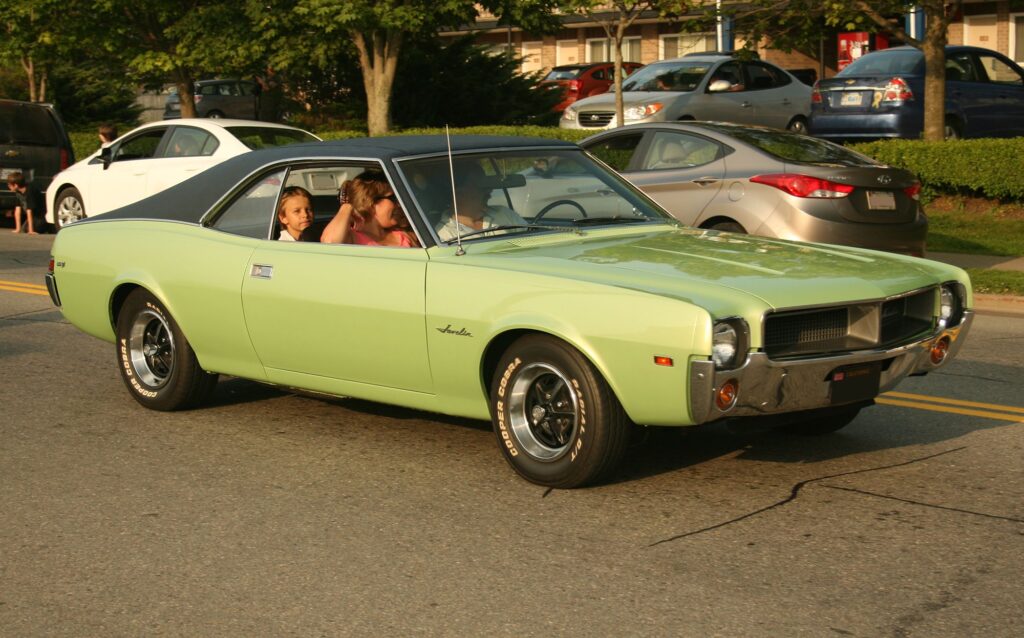
13. **AMC Javelin (1967-1974)**The AMC Javelin carved out a unique position in the American muscle car landscape, proving that American Motors Corporation could compete with the established giants. It was a vehicle that, unusually, managed to function both as a potent muscle machine and, on occasion, even as a political prop, showcasing its unexpected versatility and impact during its time.
Produced for two distinct generations from 1967 to 1974, the Javelin was a quintessential American car of its era, featuring rear-wheel drive and a formidable, powerful engine under its hood—a true ‘baby’ that hauled with impressive vigor. Its bold styling was eye-catching, and its performance was not merely for show; it earned significant praise from racing legends such as Mark Donohue, further solidifying its credentials through Trans-Am championship wins, an aspect often overlooked in AMC’s rich legacy.
Beyond its performance pedigree, the Javelin offered an accessible entry point into the muscle car segment, being more affordable than many of its rivals, with a baseline starting at just $2,743 in 1967. Interestingly, it was also the first standard vehicle that police officers in the U.S. adopted as their highway patrol car, a decision partly influenced by its robust nature and the advanced safety features it offered for its time. A modern Javelin could surprise and delight a new generation, honoring its unique blend of performance, affordability, and historical significance.
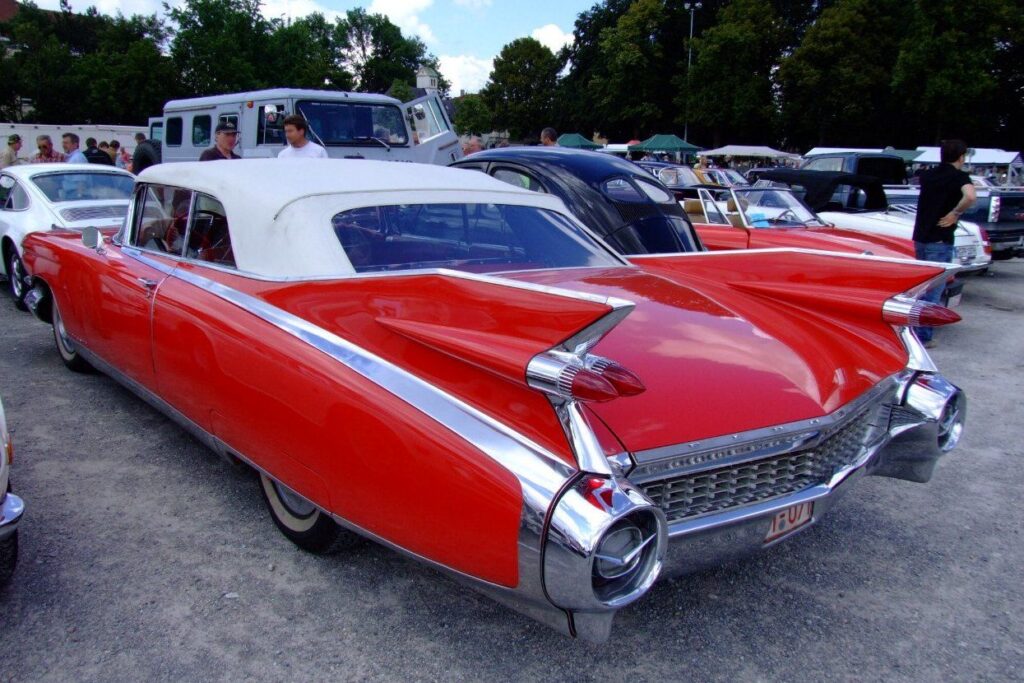
14. **Cadillac Eldorado (1950s-1970s)**The Cadillac Eldorado stands as an enduring emblem of quintessential American luxury and aspirational motoring, a vehicle that transcended mere transportation to become a powerful status symbol. Its evolution across several decades magnificently showcased the changing tides of automotive grandeur, from the dramatic, soaring tailfins that characterized its late 1950s iterations to the imposing, yet sleek, front-wheel-drive coupes of the 1970s.
Each iteration of the Eldorado consistently delivered a distinct blend of bold styling and an exceptionally plush, comfortable ride, meticulously engineered to provide an unparalleled sense of sophistication and effortless cruising. This unwavering commitment to opulence and powerful presence is precisely why enthusiasts continue to harbor a deep longing for its return, envisioning a contemporary model that revives its grand legacy.
Imagine a modern Eldorado, blending that unmistakable Cadillac presence with today’s technological prowess and refined performance. Such a vehicle would not only pay homage to its illustrious past but also redefine what American luxury means in the 21st century, continuing its tradition as a car that embodies both prestige and a truly commanding road presence.
Car Model Information: 1976 Cadillac Eldorado Convertible
Caption: 1963 Cadillac Eldorado Convertible
Name: Cadillac Eldorado
Manufacturer: Cadillac
Production: 1952–2002
Layout: Front-engine, rear-wheel-drive layout
Aka: Cadillac Fleetwood Eldorado
Class: Personal luxury car
Successor: Cadillac CTS
Categories: 1960s cars, 1970s cars, 1980s cars, 1990s cars, 2000s cars
Summary: The Cadillac Eldorado is a luxury car manufactured and marketed by the Cadillac Motor Car Division of General Motors from 1952 until 2002, over twelve generations.
The Eldorado was at or near the top of the Cadillac product line. The original 1953 Eldorado convertible and the Eldorado Brougham models of 1957–1960 had distinct bodyshells and were the most expensive models offered by Cadillac during those years. The Eldorado was never less than second in price after the Cadillac Series 75 limousine until 1966. Beginning in 1967, the Eldorado retained its premium position in the Cadillac price structure, but was manufactured in high volumes on a unique, two-door personal luxury car platform.
The Eldorado carried the Fleetwood designation from 1965 through 1972, and was seen as a modern revival of the pre-war Cadillac V-12 and Cadillac V-16 roadsters and convertibles.
Get more information about: Cadillac Eldorado
Buying a high-performing used car >>>
Brand: Cadillac Model: Eldorado
Price: $29,499 Mileage: 31,898 mi.

15. **Chevy Nova SS (Late 1960s)**The Chevrolet Nova, initially conceived as a humble compact, was utterly transformed by its Super Sport (SS) variant into an undisputed quarter-mile beast. Specifically, the 396-powered versions that thundered onto the scene in the late 1960s rapidly achieved legendary status among street racers and performance enthusiasts alike.
Despite its relatively small frame, the Nova SS packed serious heat under the hood, challenging the notion that raw power was exclusive to full-sized muscle cars. It unequivocally proved that you didn’t need a massive footprint to dominate red lights and leave a lasting impression on the drag strip, establishing itself as a formidable contender in a compact package.
While production of the Nova SS saw its primary run between 1968 and 1979, and a brief revival in the 1980s, demand for these iconic models remains remarkably high among collectors, particularly for the revered first-generation models. With a renewed appetite for raw power and exhilarating performance in today’s automotive market, the time might be ripe for Chevrolet to take inspiration from the Nova SS’s triumphant past. A modern return, perhaps with updated powertrain technology, could once again offer an accessible yet potent muscle car experience, proving that great things truly can come in smaller, incredibly powerful packages.
Car Model Information: 2007 Chevrolet Colorado LT
Caption: 1963 Chevrolet Chevy II 300 4-door sedan
Name: Chevrolet Chevy II / Nova
Manufacturer: unbulleted list
ModelYears: unbulleted list
Production: unbulleted list
Class: unbulleted list
Successor: unbulleted list
Categories: 1970s cars, 1980s cars, All articles needing additional references, Articles needing additional references from March 2025, Articles with short description
Summary: The Chevrolet Chevy II/Nova is a small automobile manufactured by Chevrolet, and produced in five generations for the 1962 through 1979, and 1985 through 1988 model years. Built on the X-body platform, the Nova was the top selling model in the Chevy II lineup through 1968. The Chevy II nameplate was dropped after 1968, with Nova becoming the nameplate for all of the 1969 through 1979 models. It was replaced by the 1980 Chevrolet Citation introduced in the spring of 1979. The Nova nameplate returned in 1985, produced through 1988 as a S-car based, NUMMI manufactured, subcompact based on the front wheel drive, Japan home-based Toyota Sprinter.
Get more information about: Chevrolet Chevy II / Nova
Buying a high-performing used car >>>
Brand: Chevrolet Model: Nova
Price: $9,990 Mileage: 0 mi.
As we conclude our journey through these magnificent machines, it’s clear that the allure of classic cars from the 60s and 70s transcends mere nostalgia. Each of these 15 vehicles, whether a symbol of luxury, an engineering marvel, or a pavement-pounding muscle icon, represents a unique chapter in automotive history. Their potential revival, infused with today’s advanced technology and safety features, promises not just a trip down memory lane, but a bold leap forward—offering new generations the chance to experience the soul and spirit of an unforgettable era, reimagined for the open roads of tomorrow. The clamor for their return isn’t just a wish; it’s a recognition of timeless design and a testament to the enduring joy of driving.



